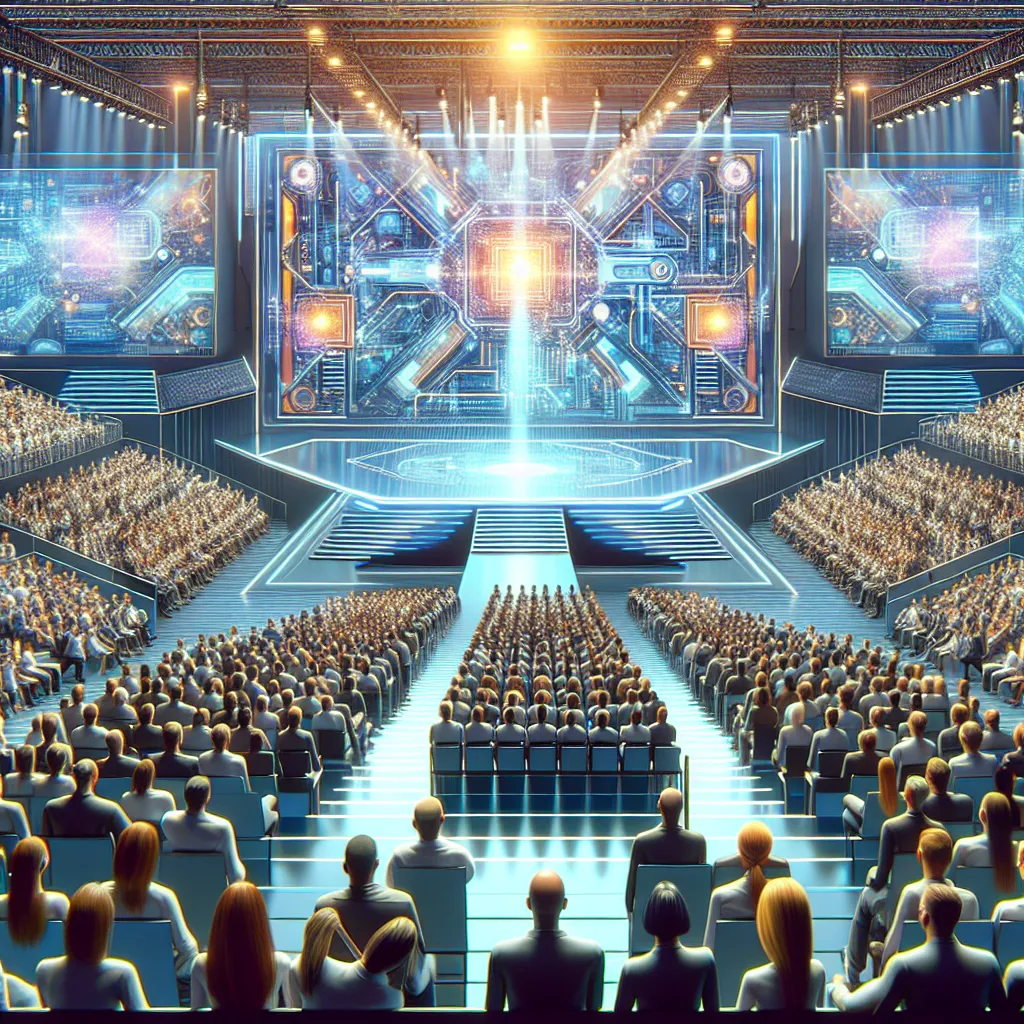
"Unleashing Lightning: The Rise of GPT-4o"
In the bustling heart of Silicon Valley, nestled between towering glass buildings and lush green parks, stood the headquarters of OpenAI. The air was electric with anticipation as engineers, data scientists, and AI enthusiasts gathered in the grand auditorium. Today was the day they had all been waiting for—the unveiling of GPT-4o, the latest and most advanced iteration of the GPT series.
The stage was set with a large screen displaying a countdown timer. As the seconds ticked away, whispers of excitement filled the room. Dr. Emily Carter, the lead researcher on the GPT-4o project, took the stage. Her eyes sparkled with a mixture of pride and excitement.
"Welcome, everyone," she began, her voice steady and confident. "Today, we are thrilled to introduce you to GPT-4o, a model that represents a significant leap forward in the field of artificial intelligence."
The screen behind her lit up with a dazzling array of graphics, showcasing the evolution of the GPT series. From GPT-1 to GPT-3, each model had brought remarkable advancements in natural language processing. But GPT-4o was different. It was faster, smarter, and more efficient than any of its predecessors.
Dr. Carter continued, "GPT-4o is not just an incremental improvement. It is a revolutionary step forward. Our team has worked tirelessly to optimize its architecture, resulting in a model that is not only more powerful but also significantly faster."
The audience leaned forward in their seats as Dr. Carter explained the technical marvels behind GPT-4o. The model had been designed with a new parallel processing framework, allowing it to handle multiple tasks simultaneously with unprecedented speed. Its neural network had been fine-tuned to reduce latency, ensuring that responses were generated almost instantaneously.
To demonstrate GPT-4o's capabilities, Dr. Carter invited a volunteer from the audience to interact with the model in real-time. A young software engineer named Alex eagerly stepped forward. He typed a complex query into the interface, asking GPT-4o to generate a detailed analysis of climate change impacts on global agriculture.
In the blink of an eye, GPT-4o began to generate a comprehensive report. The audience watched in awe as the text appeared on the screen, seamlessly weaving together data, insights, and projections. The entire process took mere seconds, a feat that would have taken previous models several minutes to accomplish.
Alex's eyes widened in amazement. "This is incredible," he exclaimed. "The speed and accuracy are beyond anything I've ever seen."
Dr. Carter smiled, knowing that this was just the beginning. "GPT-4o is designed to be a versatile tool, capable of handling a wide range of applications. From scientific research to creative writing, its speed and efficiency will transform the way we interact with AI."
As the demonstration continued, the audience was treated to a series of impressive showcases. GPT-4o effortlessly translated complex texts between multiple languages, generated intricate code snippets for software development, and even composed a beautiful piece of music in real-time. Each task was completed with lightning speed, leaving the audience in awe of the model's capabilities.
The event concluded with a standing ovation, as Dr. Carter and her team took a bow. The excitement in the room was palpable, and it was clear that GPT-4o had set a new standard for artificial intelligence.
In the days that followed, news of GPT-4o's remarkable speed and efficiency spread like wildfire. Tech companies, research institutions, and creative professionals eagerly adopted the new model, integrating it into their workflows and pushing the boundaries of what was possible.
GPT-4o became a symbol of innovation and progress, a testament to the power of human ingenuity and the limitless potential of artificial intelligence. And as the world embraced this new era of rapid and intelligent AI, the future seemed brighter and more promising than ever before.